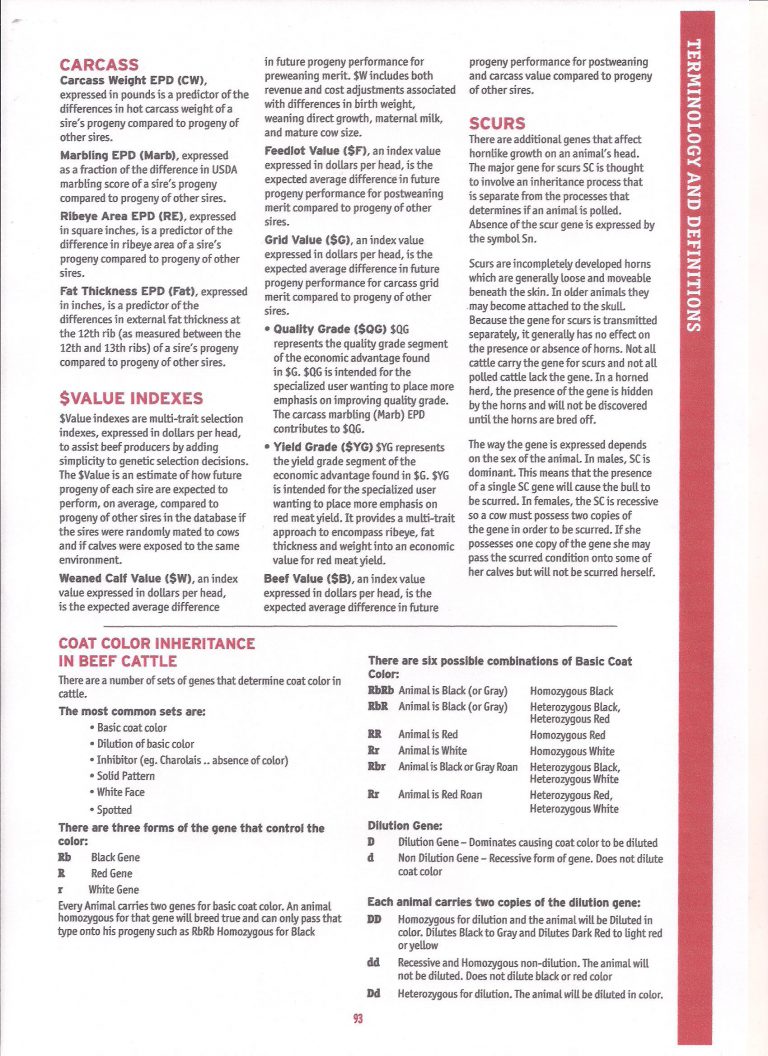In addition to the positive effects of individual genes from the breeds used in crossbreeding, dairy crossbreeding producers can expect a boost in performance due to heterosis. Heterosis is a term used in genetics and breeding and is also known as hybrid vigor.
Heterosis is an additional gain above the average genetic level of the two parent breeds. The bonus from heterosis should be approximately 5% for production and 10% for mortality, fertility, health and survival. Therefore the impact of heterosis on profit should be substantial for commercial dairy producers.
Inbreeding
The global Holstein population has become more inbred over time, increasing at about 0.1% per year. This is causing increased inbreeding depression, especially for mortality, cow fertility, cow health and survival. As relationships between individuals rise, it becomes more and more likely that bulls and cows that are mated to each other will be closely related. Unfortunately the use of genomically selected sires appears to be increasing inbreeding in some dairy breeds.
Inbreeding robs dairy producers of income by increasing stillbirths, meanwhile reducing cow fertility, disease resistance and shortening herd life. As highly inbred embryos are not viable, this leads to a reduction in cow fertility.
Why crossbreeding?
Crossbreeding eliminates concerns about inbreeding. When breeds for a crossbreeding scheme are chosen well, the effects of heterosis are the opposite of the effects of inbreeding depression. Heterosis will be an additional benefit on top of the parent (breed) advantage and is especially valuable for traits such as vitality, fertility, disease resistance and health.
Effective crossbreeding begins with two superior breeds. These breeds must complement each other well and independently have a large enough selection base to continue their own unique breeding goals. Bringing together two breeds with desirable genes is called complementarity. A crossbreeding program should be well planned and organized and use the best bulls from breeds that suit your dairy farm conditions.
Number of breeds to use in dairy crossbreeding systems
The extent of heterosis realized from crossbreeding systems differs based on the number of breeds included in the rotation. Table 1 shows the extent of heterosis realized for each generation in crossbreeding systems that include 2, 3, or 4 unrelated breeds. Generally speaking, finding more than three breeds that are especially well-suited for a specific environment or management system may be difficult.
Table 1. Heterosis by generation for crossbreeding using 2, 3 or 4 unrelated breeds in rotation.

2 PLUS™ is a rotational crossbreeding system using two breeds, for example whereby the Holstein and the Norwegian Red (NRF) breeds are used alternately to produce the next generation. Thus F1* heifers from NRF sires should be mated to purebred Holstein bulls; their progeny to NRF; the progeny of those to Holstein; and so on. Read "How Many and Which Breeds to Use" for assistance in choosing the best breeds and 2-, 3- or 4-breed rotational crossbreeding scheme that will benefit you the most.
Use highly ranked progeny tested bulls
Crossbreeding "done well" can be viewed as a mating system that exploits and goes beyond the genetic improvement happening within breeds. Continuous use of progeny-tested and highly-ranked A.I. bulls is critical to genetic improvement regardless of the mating system (pure breeding or crossbreeding). Use of the best A.I. bulls from each breed in your crossbreeding scheme, chosen according to your breeding goals, will give you the best results.
Unfortunately some dairy producers might interpret the benefits of crossbreeding as justification to use natural service "different breed" bulls rather than A.I. This practice results in lower merit offspring the majority of the time.
Norwegian Red for health and fertility
The Norwegian Red is a high producing dairy cow that has been selected for health and fertility traits for the past 40 years. Several international trials prove that the Norwegian Red breed is superior for health and fertility and is a profitable breed choice for a well-designed crossbreeding scheme.
Click here to view different crossbreeding programs with Norwegian Red
Some of the ways that the Norwegian Red as a breed decreases costs are through lower calf and cow mortality rates, higher fertility rates and lower incidences of mastitis and other diseases (leading to less use of antibiotics, withholding of milk and veterinary treatments). Many Norwegian Red bulls also carry the polled gene, which when inherited eliminates the need to dehorn calves.
*F1 is the first generation produced by a cross between two different breeds.



